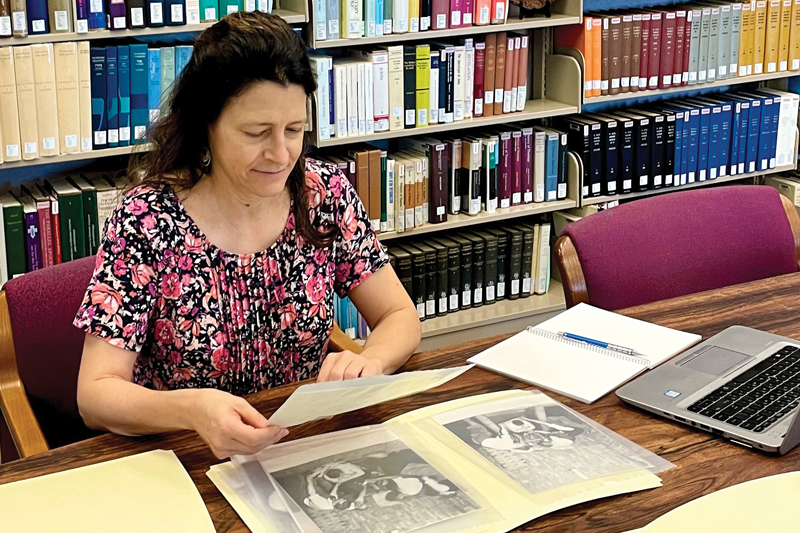Blogs

Research Sanctuary
By Liz Hutter
For four weeks this past summer, the reading room of the Marian Library offered me a research sanctuary of sorts as a resident scholar. During my fellowship, I focused on examining the Marian Library’s collection of pamphlets, postcards, photographs, case studies and other artifacts related to Lourdes, the Marian shrine in France commemorating apparitions of the Virgin Mary to Bernadette Soubirous in 1858.
As a scholar with interests in the health humanities, disability studies and technical communication, I am drawn to Lourdes as a historic and contemporary sanctuary for the ways in which it centers ill and disabled bodies in experiences that are not only therapeutic and spiritual, but also medicalized and ritualized. The materials in the Marian Library collection readily supported my ability to examine Lourdes from multiple disciplinary perspectives. When I first began working in the collection, I dwelled on the volumes of the Bulletin of the International Medical Association of Lourdes, which regularly reported on notable cases of healing and documented the systematic process through which an individual’s cure might be recognized by the Catholic Church as an unexplained or miraculous healing.
As I spent more time reading in the collection, my perspective was necessarily challenged in productive ways. Sifting through newspaper clippings and other ephemera from the Mildred Sutton collection, for instance, encouraged me to consider how the organizational work of the Lourdes Medical Bureau and its role in adjudicating cures with no medical explanation were reported in Catholic trade publications. Encountering the ways in which stories of healing at Lourdes circulated in these publications pushed me to consider an audience of readers who, though they may never travel to the Grotto or join the candlelight procession, find the narratives of healing at Lourdes important nevertheless.
My experience as a Marian Library resident scholar has been one of the richest opportunities I have had as a UD faculty member. With access to study the collections in the Marian Library for an extended time, my understanding of Lourdes as a site of therapeutic and spiritual healing has developed in exciting ways. With the fall semester already underway, I not only have begun drafting a manuscript incorporating many of the materials I studied as a resident scholar; I also am using the experience to shape a pedagogical project. Students in my first-year writing course are collaborating with the Marian Library to curate a public exhibit around rituals of healing, drawing from artifacts in the Marian Library’s collections.
